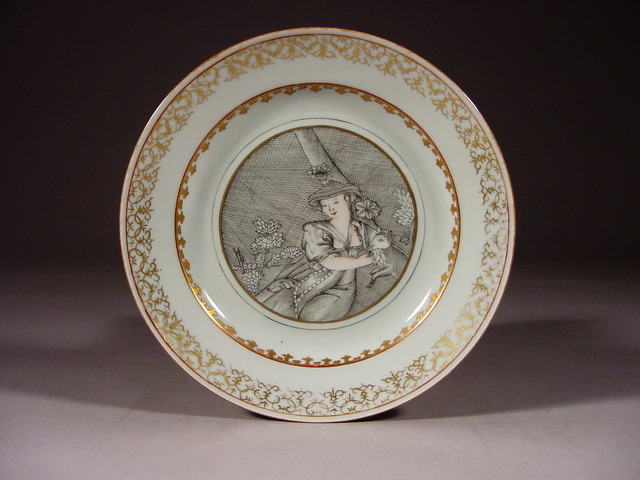
乾隆 Qianlong en Grisaille "Shepherdess" Export Plate

|
A superb quality Chinese export plate decorated in fine black line style known as en grisaille or encre de Chine, additionally with rouge de fer enamel and gilding, taken from a series of European subject scenes popular in the 18th century. The central roundel depicts a young shepherdess in a straw hat, resting against a tree trunk while holding a lamb at her side. A band of rouge de fer enamel and gilt spearheads encircles the cavetto and a scrolling gilt Meissen-style lacework border decorates the wide rim. This pastoral scene exhibits the skill with which Chinese artisans reproduced the effect of European engravings, and great care is shown in its details, from the fine cross-hatching to the subtle skin tone shading, and the use of two shades of gilding on the earring. The "Shepherdess" pattern
is known as one of the "gallant and idyllic" group of scenes copied
onto porcelain from European prints sent to China by Western clients (some other
groups included portraiture, armorial, mythological, and religious engravings).
The idyllic scenes conveyed a romantic view of nature, domestic scenes, and
solitary repose. In a classic example of design influences exchanged in the China Trade,
the design on this plate was likely copied by the Chinese directly from porcelain produced by
the Meissen factory in Germany, and was destined for the Dutch market.
|
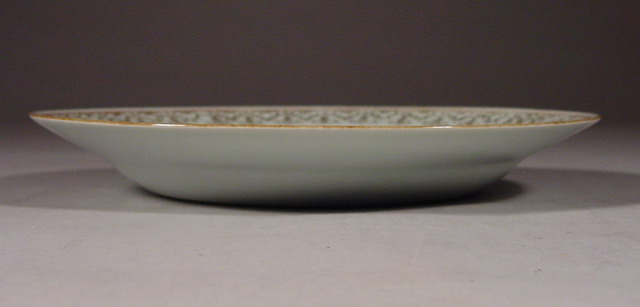
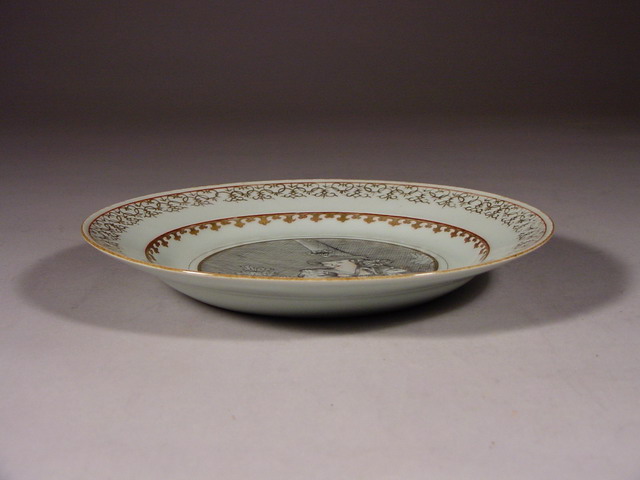
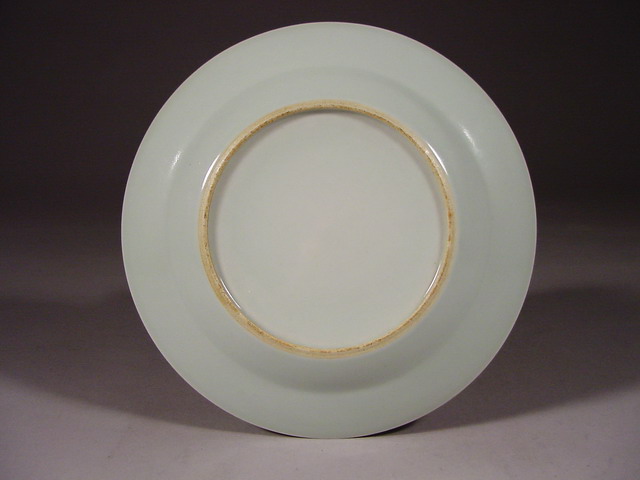

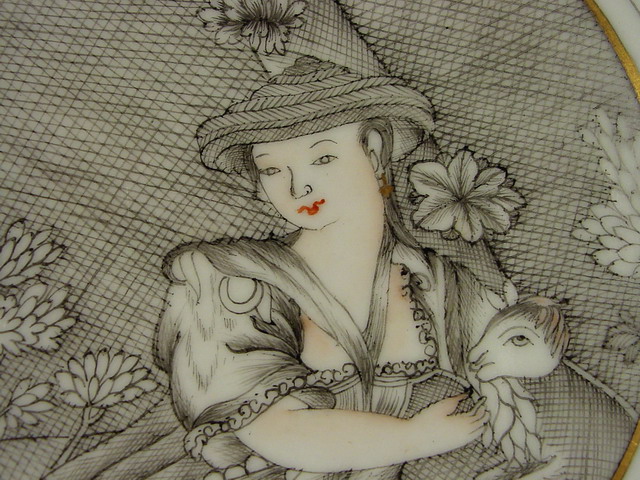
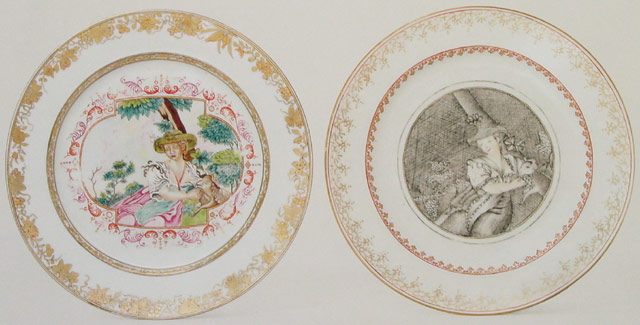 |
| The plate on the right depicting the same pattern is pictured in the J. Louis Binder Collection of Chinese Export Art sale, Christies, London, June 2003, together with a famille rose Meissen-style plate of "the Shepherdess." The famille rose version shown is similar to one shown in Hervouet and Bruneau's La Porcelaine des Compagnies des Indes a Decor Occidental, Paris, 1986, in which the authors suggest that an engraving entitled Autumn by Claude Duflos, based upon a pastel by Rosalba Carriera, might be the inspiration for this design. An identical plate from the Mottahedeh Collection is illustrated by Howard and Ayers in China for the West, London and New York, 1978, vol.II, no. 532, and suggest that a Meissen porcelain saucer painted in Augustburg by hausmaler must have been the original, which would have been directly copied by the Chinese painters. |
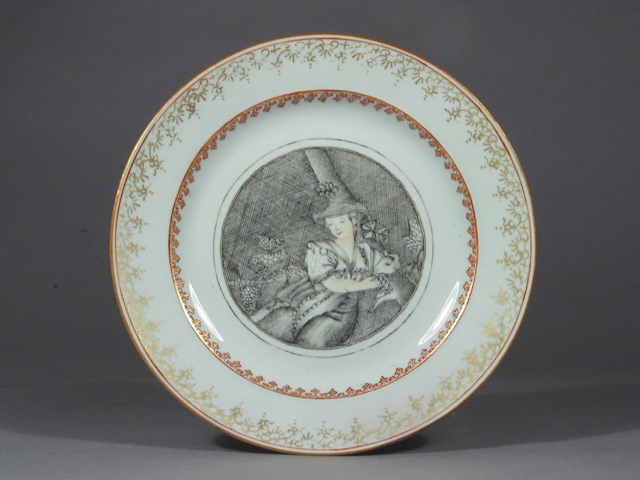
The J. Louis Binder Plate (formerly in our inventory)
Click On Any Image to View Enlargements